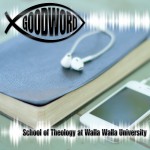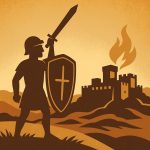| Host: | Tiago Arrais |
|---|---|
| Guests: | Mathilde Frey and Jody Washburn |
| Quarter: | Exodus |
| Lesson: | 4 |
| Sabbath: | July 26th, 2025 |
Key Verses: Exodus 7-10
Key Questions
- Chapter 7 begins with a clarification of the dynamic between God, Moses and Aaron in terms of prophetic activity followed by an announcement of judgment that God would bring to the land of Egypt. How does this text anticipate later prophetic activity within Israel?
- How do the miraculous signs performed by Moses and Aaron challenge Pharaoh’s authority? In what ways do the “plagues” challenge the Egyptian worldview and its pantheon of gods?
- What does Pharaoh’s continued resistance reveal about the nature of human obstinacy in the face of justice? What is the meaning of “hardening of the heart” in the sequence of the plague texts?
- Why is it important that future generations remember the signs God performed in Egypt? How do memory and testimony serve to build community resilience in oppressed or marginalized groups (and in communities of faith today)?
- How do the plagues (hail destroying crops and animals) reflect a breakdown of Egypt’s ecological and economic systems? What do they teach us about the relationship between divine judgment and the environment?
Theological Insights
“The present narrative is a sophisticated and symmetric literary structure with a patterns of three groups each comprising three plagues. The climactic tenth plague possesses a character all its own. The first two afflictions in each triad are forewarned; the last always strikes suddenly, unannounced. Furthermore, in the case of the first, fourth, and seventh plagues Pharaoh is informed in the morning and Moses is told to ‘station’ himself before the king, whereas in the second of each series Moses is told to ‘come in before Pharaoh,’ that is, to confront him in the palace. Finally, in the first triad of plagues it is always Aaron who is the effective agent; in the third, it is always Moses. The controlling purpose behind this literary architecture is to emphasize the idea that the nine plagues are not random vicissitudes of nature; although they are natural disasters, they are the deliberate and purposeful acts of divine will—their intent being retributive, coercive, and educative. As God’s judgments on Egypt for the enslavement of Israelites, they are meant to crush Pharaoh’s resistance to their liberation.” Sarna, Exodus, 38.
“Egypt was renowned in the ancient world for its sages and its workers of magic and wonders. The positive function of magic for Israelites as well as others in the biblical world has already been noted in the discussion of Moses’ staff (4:2-5). Similarly, magic is not viewed negatively here. he techniques of Israel’s leaders are not contrasted with those of the Egyptians. Rather, this scene shows Israel’s god to be more powerful; for the magic rods of the Egyptian court, when turned into snakes, are consumed by Aaron’s staff. This fascinating vignette not only introduces the signs-and-wonders narrative; it also anticipates the climax of the story of departure, when the Egyptians perish in the divided Reed (Red) Sea. In the poetic celebration of the escape of the Israelites in chapter 15, God’s outstretched hand, the equivalent of Aaron’s staff, causes the earth to “swallow” the pharaoh’s army (v. 12); the verb is the same as in 7:12.” Meyers, Exodus (NCBC), 80-81.




